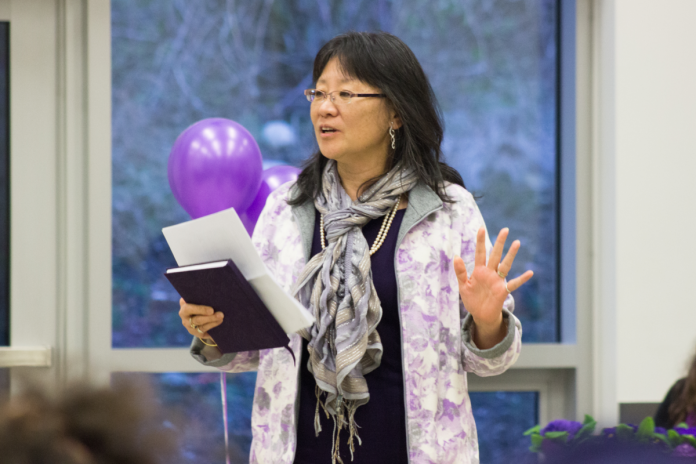Dr. Lucy Lee is a recognized leader in the field of fish invitroomics. If that term does not sound familiar, worry not. It was coined only last year by Dr. Niels Bols from the University of Waterloo to describe his and Lucy’s unique area of work: the art of growing cells in a culture.
Lucy spoke at the Faculty of Science Dean’s seminar series Tuesday, Feb. 20, on her 35 years of research in growing fish cell lines. Cell lines are cell cultures made from an organism’s cells that continue to grow seemingly indefinitely. A familiar example is the famous HeLa cancer cell line, without which many advancements in modern medicine would not have been possible.
Fish cell lines are a bit different from human cell lines. For one thing, they seem to “immortalize” spontaneously. Only cancerous human cells do this.
“I’m calling it, ‘It’s really fishy,’” Lucy laughed.
Many fish species have two unique qualities: the ability to regenerate some organs and even limbs, and indeterminate growth, the ability to grow continuously even in adulthood. This is the reason why local salmon can get so large, if given time to grow. Fish cells also seem to lack inducible p53, a protein that causes cell death.
With a good sample, sterile conditions, and the correct nutritional factors, Lucy said it is relatively easy to work with fish cells.
“They’re actually quite forgiving,” said Lucy, as she showed the audience an old picture of her son changing the media of the cells lines. “You can forget about them for over a year at 4°C.”
Fish cells were originally cultured as a way to grow viruses, as viruses require living cells to survive. The biotechnological applications for these cells lines are now numerous, and can range from toxicology applications, nutrition studies, or even the study of microbial diseases.
A lab in San Francisco is working on growing sushi in a petri dish. Scientists at Finless Foods, with Lucy’s advice, are working on growing bluefin tuna cells, in hopes of helping with the overfishing crisis. Theoretically, one tiny cell could become one ton of tuna meat.
Cultured cells can also be used to test for toxicity in the oil sands wastewater. Testing the toxicity in the holding ponds themselves would involve the use of many fish, and could become quite expensive. Instead of using whole organisms, Lucy’s lab would test the water toxicity in vitro. Samples of the water were sent to Lucy’s lab, and cell lines are exposed to the water samples to determine toxicity.
Lucy’s work began in 1983, where she created her first cell line, the rainbow trout liver cell line. Since then, she has created nearly 100 unique cell lines. Her current Natural Sciences and Engineering Research Council grant is for initiating a line of fish olfactory cells, a cell line that does not exist for fish.
Image: Lucy Lee


